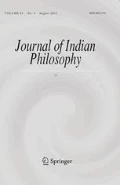Abstract
This essay examines historical and contemporary connections between Buddhist and medical traditions through a study of the Accomplishing Medicine (sman sgrub) practice and the Yuthok Heart Essence (G.yu thog snying thig) anthology. Accomplishing Medicine is an esoteric Buddhist yogic and contemplative exercise focused on several levels of “alchemical” transformation. The article will trace the acquisition of this practice from India by Tibetan medical figures and its assimilation into medical practice. It will propose that this alchemical practice forms the central nexus of connection between Tibetan medicine and the Buddhist Nyingma tradition, and that this little-studied link is not a marginal feature of Tibetan medicine but rather one that has had a significant shaping factor on each tradition throughout history.
Similar content being viewed by others
References
Blo bzang chos grags, Jo bo lhun grub bkra shis, & Dar mo sman rams pa. (1982). G.yu thog gsar rnying gi rnam thar. Pe cin: Mi rigs dpe skrun khang.
Bstan dzin rgya mtsho, Klong-chen-pa Dri-med-od-zer, & Patrick Gaffney. (2007). Mind in comfort and ease: The vision of enlightenment in the great perfection: Including Longchen Rabjam’s finding comfort and ease in meditation on the great perfection. Boston: Wisdom Publications.
Craig, S. (Forthcoming). From empowerments to power calculations: Notes on efficacy, value, and method. In V. Adams, M. Schrempf & S. Craig (Eds.), Medicine between science and religion. London: Berghahn Books.
Donden, Y., & Hopkins, J. (1997). Health through balance: An introduction to Tibetan medicine. Delhi: Motilal Banarsidass.
Dorje, G., & Meyer, F. (Eds.) (1992). Tibetan medical paintings: Illustrations to the “Blue Beryl” treatise of Sangye Gyamtso (1653–1705) (2 Vols). New York: Harry N. Abrams.
Fenner, T. (1979). Rasayana Siddhi: Medicine and alchemy in buddhist tantras. Wisconsin: University of Wisconsin.
Garrett, F. (2005). Ordering human growth in Tibetan medical and religious embryologies. In E. L. Furdell (Ed.), Textual healing: Essays on medieval and early modern medicine (pp. 32–52). Leiden: Brill.
Garrett F. (2007) Buddhism and the historicizing of medicine in thirteenth century Tibet. Asian Medicine: Tradition and Modernity 2(2): 204–222
Garrett, F. (2008). Religion, medicine and the human embryo in Tibet. Routledge Critical Studies in Buddhism. Abingdon; New York: Routledge.
Garrett F., Adams V. (2008) The three channels in Tibetan medicine, with a translation of Tsultrim Gyaltsen’s A clear explanation of the principal structure and location of the circulatory channels as illustrated in the medical paintings. Traditional South Asian Medicine 8: 86–115
Gayley H. (2007) Soteriology of the senses in Tibetan buddhism. Numen 54: 459–499
Gu ru chos kyi dbang phyug. (1979). Sman sgrub las tshogs. In Bka’ brgyad gsan ba yons rdzogs: A complete cycle of Rnin-Ma-Pa practice focusing upon the Ancient eight pronouncements of Gu-ru rin-po-che (pp. 305–324). Paro: Ngodrup and Sherab Drimay.
Gyatso J. (2004) The authority of empiricism and the empiricism of authority: Medicine and buddhism in Tibet on the eve of modernity. Comparative Studies of South Asia, Africa and the Middle East 24(2): 83–96
Gyurme, D. Guhyagarbha Tantra: An introduction (Part 2). Wisdom Books, http://www.wisdombooks.com/FocusDetail.asp?FocusRef=47.
Gyurme, D., Kapstein, M., &’Jigs-bral-ye-ses-rdo-rje Bdud-’joms. (2002). The Nyingma School of Tibetan Buddhism, its fundamentals and history. Boston: Wisdom Publications.
Jacobson, E. (2000). Situated knowledge in classical Tibetan medicine: Psychiatric Aspects. Harvard University.
Karmay, S. (1998). The ordinance of Lha Bla-Ma Ye-Shes-’Od. In S. Karmay (Ed.), The arrow and the spindle: Studies in history, myths, rituals and beliefs in Tibet (pp. 3–16). Kathmandu: Mandala Book Point.
Kind, M. (2002). Mendrub: A Bonpo ritual for the benefit of all living beings and for the empowerment of medicine performed in Tsho, Dolpo. Kathmandu: WWF Nepal Program, University of Zurich.
Kohn, R. J. (2001). Lord of the dance: The Mani Rimdu festival in Tibet and Nepal. Suny Series in Buddhist Studies. Albany: State University of New York Press.
Kunzang, R. R. J. (2001). Tibetan medicine, Illustrated in original texts. Indian Medical Science Series No. 112. Delhi: Sri Satguru Publications.
Raghu, V., & Lokesh, C. (1995). Tibetan Mandalas: Vajravali and Tantra-Samuccaya. Sata-Pitaka Series V. 383. New Delhi: International Academy of Indian Culture.
Sangs rgyas rgya mtsho. (1994). Gso ba rig pa’i bstan bcos sman bla’i dgongs rgyan rgyud bzhi’i gsal byed bai durya sngon po’i malli ka zhes bya ba bzhugs so (2 Vols). Dharamsala: Tibetan Medical & Astro Institute.
Skyem pa tshe dbang. (2000). Rgyud bzhi’i rnam bshad. Zi ling: Mtsho sngon rigs dpe skrun khang.
Sngags mang zhib’jug khang (Ed.) (2005). G.yu thog snying thig (Vol. 9), Sngags Mang Dpe Tshogs. Pe cin: Mi rigs dpe skrun khang.
Stablein, W. (1976). The Mahākālatantra: A theory of ritual blessings and tantric medicine. Columbia University.
Taube, M. (1981). Beitrage Zur Geschichte Der Medizinischen Literatur Tibets. Sankt Augustin: VGH Wissenschaftsverlag.
Thub bstan rgya mtsho, Mullin, G. H., & Cox, C. (1988). Path of the Bodhisattva Warrior: The life and teachings of the thirteenth Dalai Lama. Ithaca, N.Y., USA: Snow Lion Publications.
Tucci G. (1980) The religions of Tibet. University of California Press, Berkeley
Tulku Urgyen Rinpoche, Kunsang, E. P., & Schmidt, M. B. (2005). Blazing splendor: The memoirs of the Dzogchen Yogi Tulku Urgyen Rinpoche, as told to Erik Pema Kunsang & Marcia Binder Schmidt (1st ed.). Kathmandu, Nepal: Rangjung Yeshe Publications.
Walter, M. (1979). Preliminary results from a study of two Rasayana systems in Indo-Tibetan esotericism. In M. Aris & A. San Su Kyi (Eds.), Tibetan Studies (pp. 319–324). Warminster: Aris and Phillips.
Walter, M. (1980). The role of alchemy and medicine in Indo-Tibetan tantrism. Indiana University.
White D.G. (1996) The alchemical body: Siddha traditions in Medieval India. University of Chicago Press, Chicago
Zur mkhar pa blo gros rgyal po. (1989). Rgyud bzhi’i’grel pa mes po’i zhal lung (2 Vols). Krung go’ipod kyi shes rig dpe skrun khang.
Author information
Authors and Affiliations
Corresponding author
Rights and permissions
About this article
Cite this article
Garrett, F. The Alchemy of Accomplishing Medicine (sman sgrub): Situating the Yuthok Heart Essence (G.yu thog snying thig) in Literature and History. J Indian Philos 37, 207–230 (2009). https://doi.org/10.1007/s10781-009-9070-3
Published:
Issue Date:
DOI: https://doi.org/10.1007/s10781-009-9070-3




